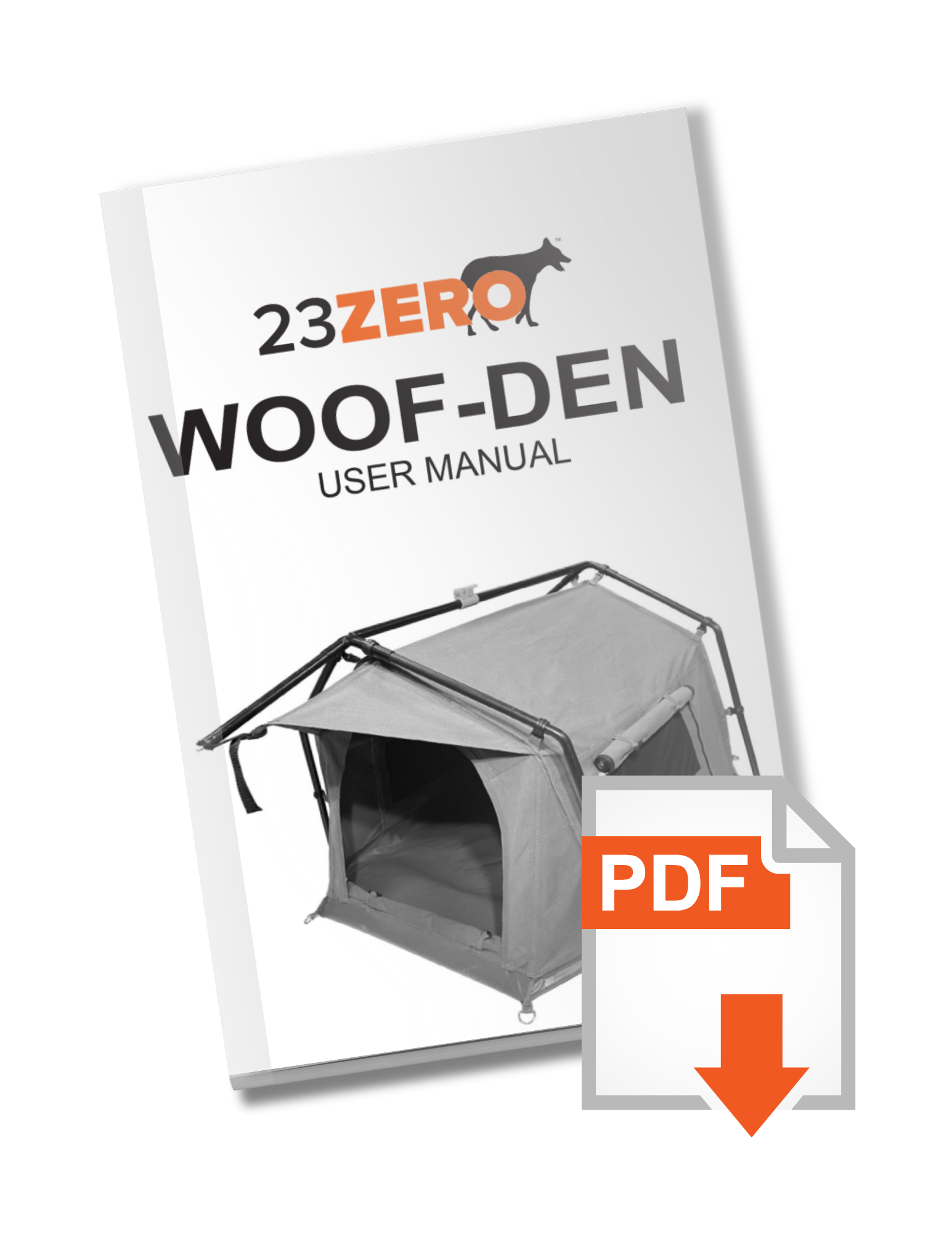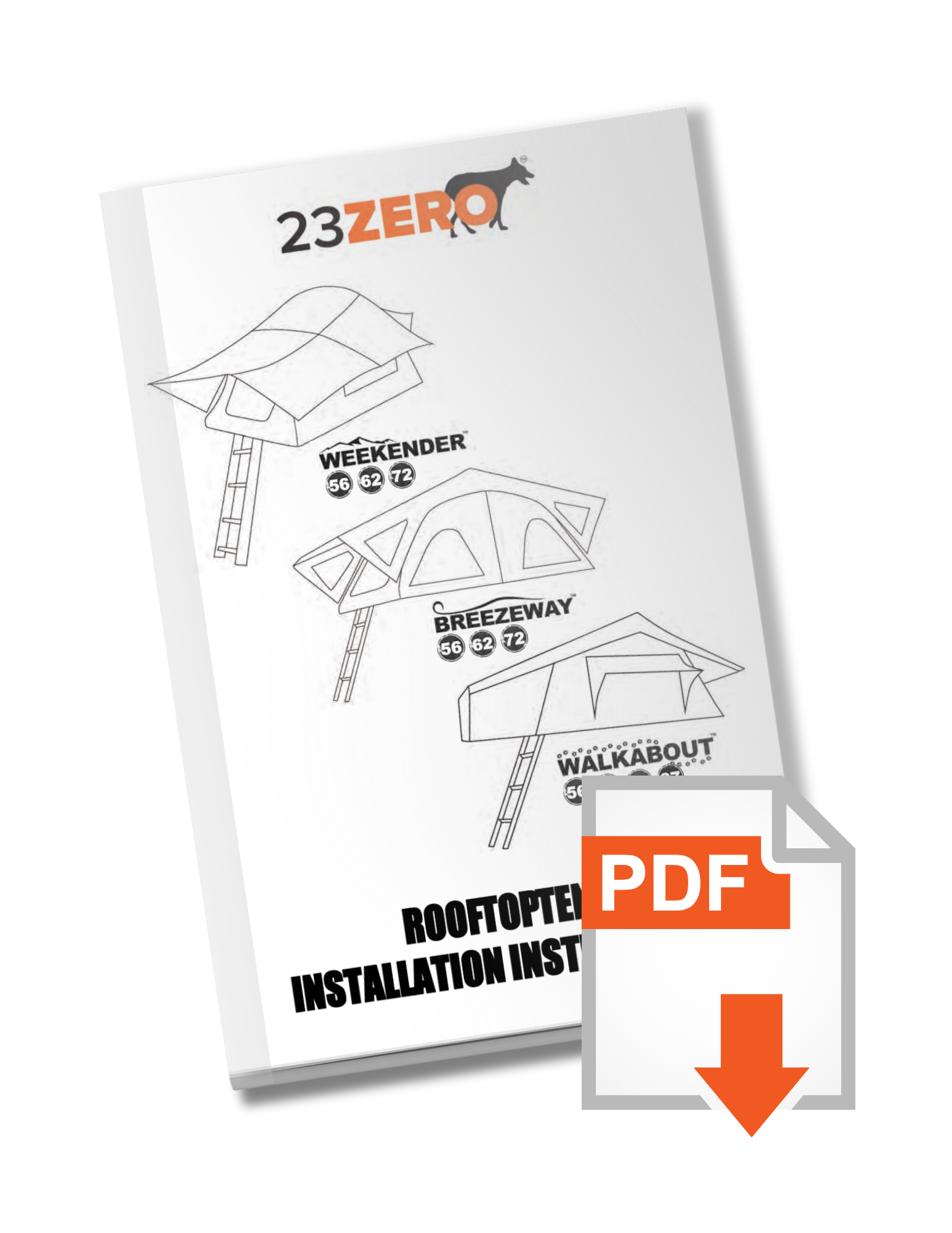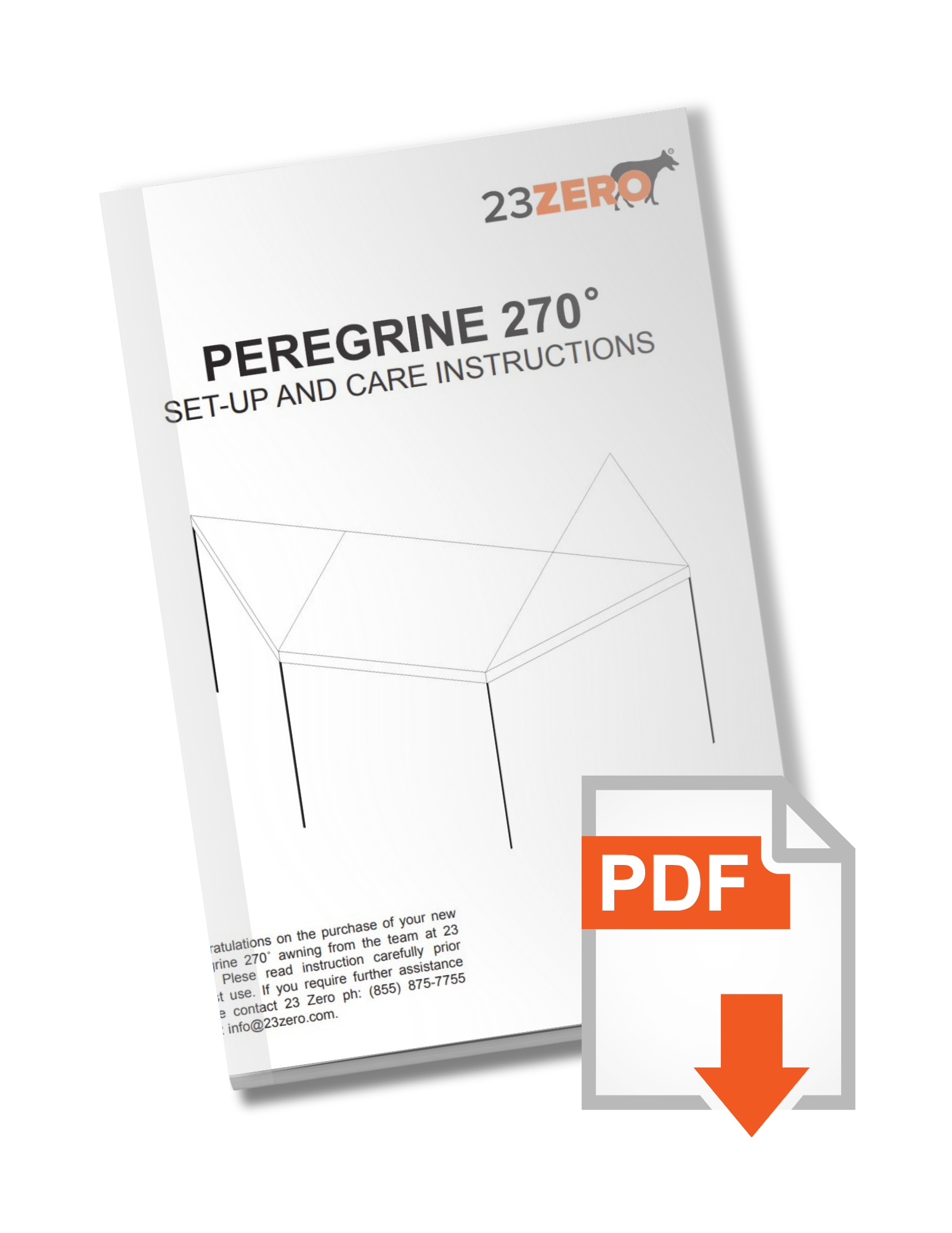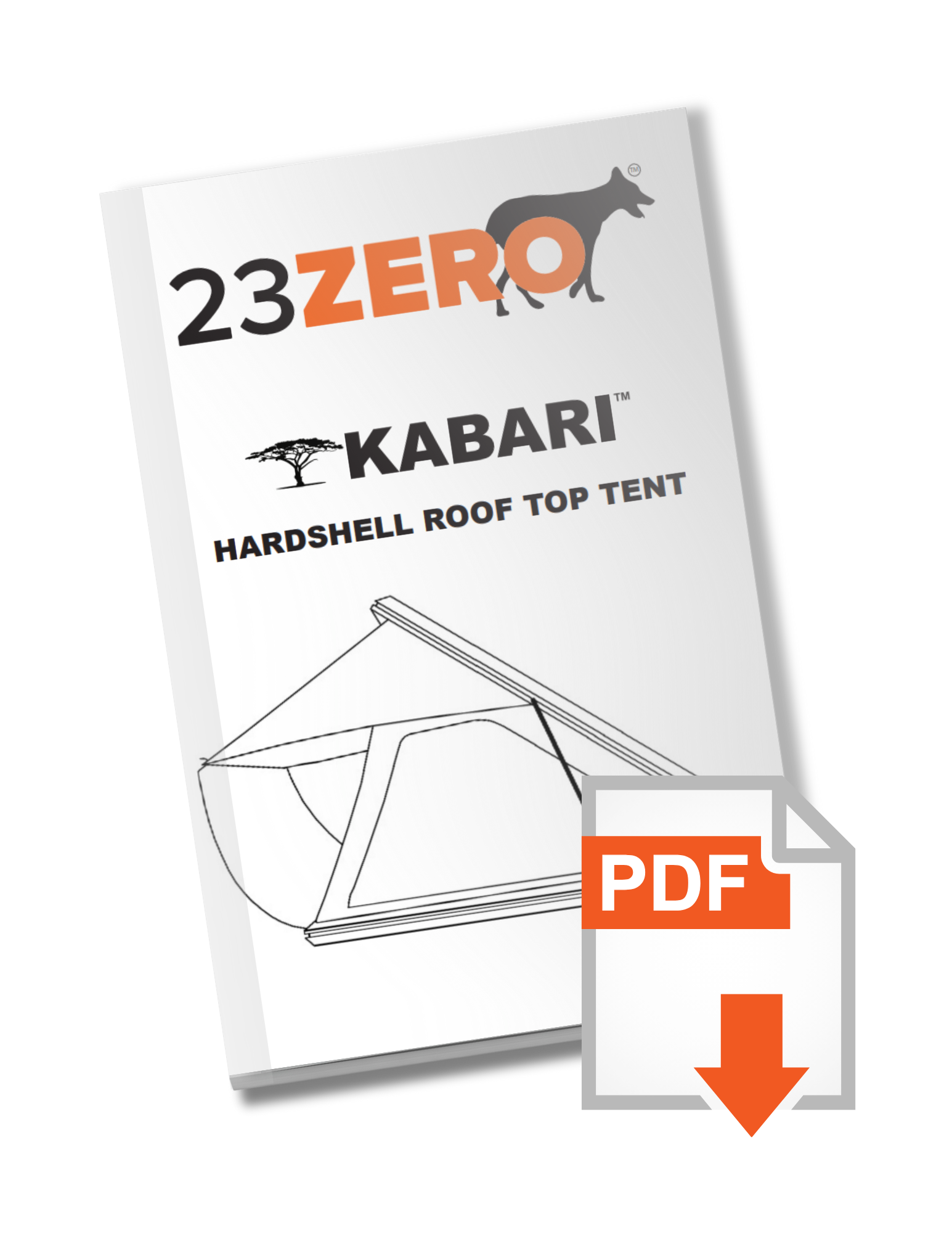Install Guides
Product Installs, Info, Repairs and Tricks
frequently asked questions
- What is the weight limit for your tents?
Each tent has a weight capacity of around 220 lbs. per camper. Please keep in mind that the weight within the tent needs to be evenly distributed and supported. The approximate weight limits per tent size are as follows:
56”: ~440 lbs.
62”: ~660 lbs.
72”: ~880 lbs.
87”: ~1320 lbs.
- How much bedding can I store inside ?
- 23ZERO tents were designed to allow sheets to be left on and a thin blanket or sleeping bag left inside.
- If the side straps do not touch or you need to sit on the tent to get it to close then you will cause permanent damage to your tent and shorten the life of your cover zipper. ( the zipper tab will be the first to break)
- Memory foam toppers will NOT allow the tent to fold correctly and will cause permanent and irreparable damage.
- Do I need to have the ladder down?
Yes the ladder is required to support the open part of tent.
- What type of rack should I get?
When it comes to racks, Roof Top Tents are designed to be mounted onto crossbar style racks, and we recommend at least 2 crossbars. They can be mounted onto platform style racks but modification ( drilling) may be required. The rack needs to have a Dynamic Weight Capacity (DWC – the weight that the rack can physically carry while the vehicle is in motion) of at least the weight of the tent. You can find tent weights on our website under the “Features” section under each product. There are too many roof rack options in the market to try and offer you a direct solution.
- What are the dimensions of your tents?
The dimensions of our rooftop tents are reflected in the names. For example, the Walkabout 87 Base will have a closed profile of 87” x 48” and an open profile of 87” x 96”, and the Walkabout 72 will have a closed profile of 72” x 48” and an open profile of 72” x 96”.
Walkabout series tents have an overall open length of 122″
Breezeway series tents have an overall open length of 100″
- Do you ship internationally?
Unfortunately, we do not ship internationally from the USA, We have distribution in USA , Canada and Australia.
- Is my tent leaking, or is it condensation?
Is my tent leaking, or is it condensation?
If you found water in your tent, it is very unlikely that your tent has leaked. 23Zero tents and awnings are made to the highest specification using high quality waterproof materials and components. Waterproof material generally works both way , if it can keep water out it can also keep it in. We use tough waterproof fabrics strong stitching techniques and where possible tape seam sealing to keep it out.
How much condensation can form in a tent?
Did you know that 1 person can produce up to 16oz of condensation per night? So, let’s say you have 2 people in a tent, that is potentially 32oz of water inside your tent! Other likely sources of moisture are wet shoes, clothes, dogs, even the air itself! Warm air can hold more moisture than cold air, as the temperature falls at night the more moisture is released into the air. Fact, even without occupants, the air inside the tent can hold approximately 16oz of water!
What causes condensation in tents?
Air temperature in the tent can become warm and humid from people, heaters, and a lack of ventilation. When the warm air inside the tent hits the relatively cool fabric of the tent, the moisture condenses into liquid form.
Do all tents suffer from condensation?
In certain weather conditions, the design of any tent can be overwhelmed by moisture. For example, if it is a cold night and there is no breeze to circulate the warm, moist air out of the tent, condensation is likely to form.
If the outside temperature is much cooler than that inside the tent, The warm, humid air inside the tent then condensates onto the area of the wall of the tent . This moisture can then appear as water droplets on the walls or seams and in some cases may drop onto the mattress forming wet patches.
But my tent has a Anti Condensation mat
Anti Condensation mats cannot actually stop condensation, they do however provide room between the mattress and the floor of the tent for air to circulate and to keep a small gap between the cold surface(tent floor) and your mattress does not soak up water, The mattress in most 23Zero tents has a waterproof base to stop this from happening hence the reason we do not add the weight and bulk of the Anti Condensation mat.
How can you prevent condensation in my tent ?
Here are our top tips on keeping you and your tent dry
- Ventilate Your Tent!
The most effective way to prevent condensation is to ventilate your tent and reduce the internal humidity of your tent by promoting a good airflow. Examine your tent for low and high venting options and open them to let the moist air flow out. If the weather conditions permit, leave the upper and lower sections of the door open, mesh sections can be kept fully zipped. If appropriate, also ensure vents at the rear of the tent are fully open. Make sure the vents are not obstructed by bags or sleeping bodies.
- Store Wet Stuff Outside
Towels, boots, waterproofs, swimmers , wet fishing gear … keep that wet stuff out of the tent. Use boot bags for those and perhaps a line to hang those other wet items to help them dry.
- Do Not Use Heaters
Warming the air inside the tent will increase moisture in the air as warmer air can support more moisture , plus the warmer the tent is the more moisture will be released into the tent through evaporation and perspiration. Instead of heating the tent, warm yourself up with the right clothing and good sleeping bags.
- Open a Window
Opening a window and/or using a small fan provides much needed airflow that helps the warm moisture laden air from settling on the tent fabric.
- Being closer to water increases the amount of moisture in the air.
Rivers and lakes can increase humidity. Setting up a little further away from water sources can help reduce condensation.
- Take Spare Towels
In some weather conditions condensation is difficult to avoid. Reduce it using the steps above and pack a spare towel to simply wipe it away.








